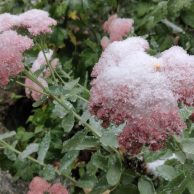 As Colorado gardeners, we’ve come to expect snow in October (last year it was October 10), but September?! In the past 24 hours, we saw a temperature swing of more than 60 degrees, going from record-breaking heat to one of the earliest recorded snow falls in the state (the earliest recorded area snowfall was in 1961 when Denver received over 4″ of snow on Labor Day).
As Colorado gardeners, we’ve come to expect snow in October (last year it was October 10), but September?! In the past 24 hours, we saw a temperature swing of more than 60 degrees, going from record-breaking heat to one of the earliest recorded snow falls in the state (the earliest recorded area snowfall was in 1961 when Denver received over 4″ of snow on Labor Day).
This translates into a lot of flower, fruit, and vegetable crops cut short, and a lot of unanticipated work protecting vulnerable plants, harvesting, and preserving. How many of you spent Sunday and Monday making pesto, tomato sauce, pickles, jam, and flower bouquets?
Here are our recommendations for cold weather and snow preparations.
COOL SEASON VEGGIES – To minimize damage, harvest your kale, chard, spinach, etc., then cover the remaining in-ground plant with a couple layers of Ensulate Row Cover fabric. Avoid using plastic directly on plants as it transfers cold to the foliage and fruit. Secure the Ensulate fabric with rocks, bricks, sandbags, and clothespins, especially on the windward side, to prevent the cold wind from getting underneath.
Large over-turned plant pots, lined with bubble-wrap will suffice as well. especially for smaller plants. In either case, the snow on top of the fabric and/or pots will also help to insulate the plant. If later you find that the top 8-12 inches has been killed-back, but the lower parts are still alive, you can cut off the dead portions. Don’t be surprised if the remaining plant growth is stunted.
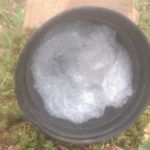
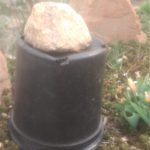
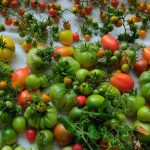 TOMATOES & WARM SEASON CROPS – Harvest tender annual / warm season veggies such as tomato, pepper, eggplant, tomatillo, basil, summer squash, bean, cucumber, etc. Unripened tomatoes can be placed on a windowsill to mature – so long as the tomato is showing some lightening of the green skin to pale green or white, it will likely ripen.
TOMATOES & WARM SEASON CROPS – Harvest tender annual / warm season veggies such as tomato, pepper, eggplant, tomatillo, basil, summer squash, bean, cucumber, etc. Unripened tomatoes can be placed on a windowsill to mature – so long as the tomato is showing some lightening of the green skin to pale green or white, it will likely ripen.
If your tomato plants are still bearing fruit, you can pull the tomato plant and its roots out of the ground and hang it upside-down in a frost-free place such as a heated garage, where much of the fruit should continue to ripen. Another option is to lay trellised plants such as tomatoes and cucumbers on the ground, where temperatures are warmer, and cover as noted above.
WINTER SQUASH – If still on the stem, the fruits of winter squash and pumpkins should be fine through a frost but not a hard freeze; cover with Ensulate fabric and secure fabric edges with clothespins to prevent wind from opening the draping. If necessary, utilize hoops or poles to aid in draping over bulky plant material. Any curing squash and pumpkins should be moved to inside a hoop house, cold-frame, or garage.
ONIONS – Pull onions whose tops have fallen over and are pushing up through the soil. As with the squash, bring curing onions inside.
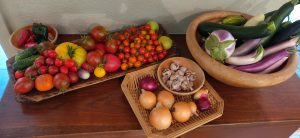
 PERENNIALS – Harvest remaining flowers to enjoy indoors. Recent plantings that are not yet established and small perennials such as cyclamen can be covered with an overturned pot as shown above, or drape Ensulate fabric over a tomato cage to protect perennials or potted annuals. Emerging fall crocus bulbs can be covered with row cover and overturned plant flats for extra protection. Following the snowstorm, it’s fine to leave the remaining plant material.
PERENNIALS – Harvest remaining flowers to enjoy indoors. Recent plantings that are not yet established and small perennials such as cyclamen can be covered with an overturned pot as shown above, or drape Ensulate fabric over a tomato cage to protect perennials or potted annuals. Emerging fall crocus bulbs can be covered with row cover and overturned plant flats for extra protection. Following the snowstorm, it’s fine to leave the remaining plant material.

SHRUBS and TREES – These in-leaf plants are the most vulnerable to damage as the wet and heavy snow can break their branches. To help prevent this, knock the snow off the plant periodically by pushing on the under-side of the limb with a light-weight rake rather than striking downward on the branch or plant. For small trees and large shrubs, you can grasp the trunk and gently shake the plant to remove a good portion of the snow. (Wearing a hood and looking down before the snow plummets are key to ensuring your comfort!)
SMALL SHRUBS – Valuable, young woody perennials and shrubs, such as Daphne, can be protected by covering with over-turned plant pots to help protect their branches from breaking.
